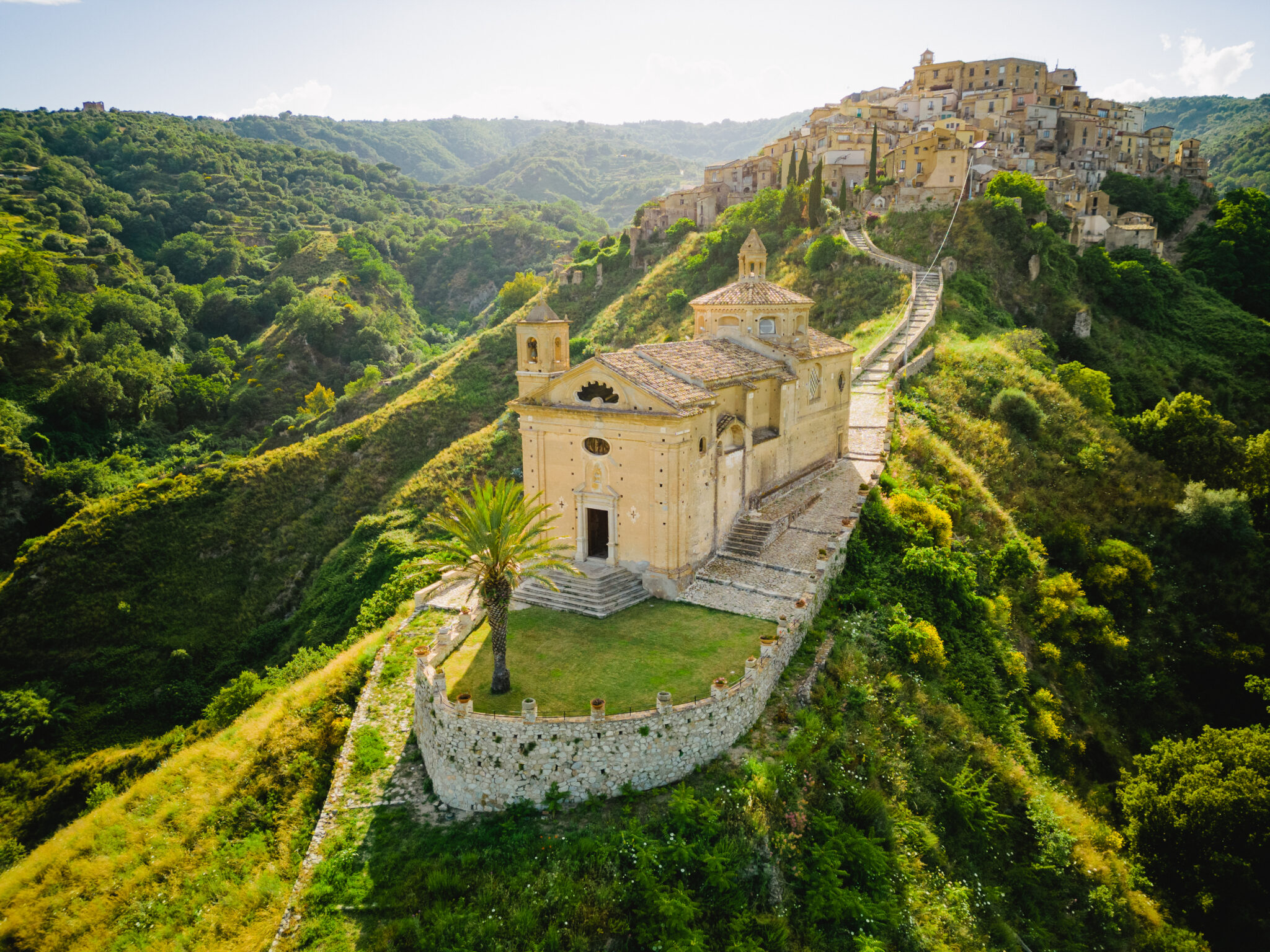The Village of Badolato
The Village of Badolato
Badolato, an ancient town in Ionian Calabria, is located at 240 meters above sea level on a hill just over 5 km from the sea. The millennial village still preserves its medieval urban structure, characterized by charming narrow and winding alleys that intersect among houses nestled closely together. Badolato was founded in 1080 AD by the first Duke of Calabria, Robert Guiscard D’Altavilla. Initially part of the County of Catanzaro during the Norman rule, it later became a barony, and during the Angevin period, it belonged to a certain Filippo di Badolato. It was also part of the Ruffo and Toraldo families before passing to the Borgia Princes of Squillace in 1596 and subsequently to the Ravaschieri family. It was damaged by earthquakes in 1640 and 1659 and almost destroyed, like many other towns in Calabria, by the earthquake of 1783.
More recently, the catastrophic earthquake of 1947 and the disastrous flood of 1951 brought the town to its knees, causing substantial damage. As a result, the Italian government built the first houses in the coastal area near the railway station and the Ionian coast, thus giving birth to Badolato Marina. In more recent times, Badolato has been involved in a pilot project of hospitality and solidarity towards migrants following the landings in 1997. Around 339 political refugees and Kurdish exiles found shelter, especially in some houses in the village provided by the Municipality of Badolato and some private citizens. This brought Badolato, a depopulated small Calabrian town, known for the famous provocation “Badolato town for sale” in the mid-’80s, back into the spotlight with significant international media coverage, thanks to an article by Mimmo Lanciano published in the national newspaper “Il Tempo” in October 1986.
More recently, Badolato gained international recognition for its candidature for the “World Habitat Award” at the UN, receiving an honorable mention and being covered by BBC, National Geographic, and other national and international media. Additionally, the town gained visibility through its presence in the film “Il Volo” by the famous director Wim Wenders.
Today, the medieval village of Badolato, a crossroads of peoples and cultures, with its ancient churches and centuries-old religious confraternities, its historic palaces, and its numerous popular cultural and enogastronomic traditions, has become a new human and tourist destination with a special international appeal and a new multicultural community. It is recognized as the “Village of Artists and Foreigners” since nationally renowned artists (and not only) and foreigners from various countries in Europe and the world spend medium to long stays or their holidays here, buying houses and even becoming new citizens. The village, of Norman origin – a natural balcony overlooking the Ionian Sea – was built on a hill like a fortress to defend against Turkish and Saracen invasions from the sea, but it is reborn thanks to the sea after centuries, as a result of the arrival on its coast of a ship carrying migrants from Turkey (specifically from the Kurdistan region). Therefore, Badolato remains a fantastic and charming medieval village in Calabria, with slow and Mediterranean rhythms, characterized by a Byzantine layout with numerous churches arranged in the shape of a Latin cross and many characteristic alleys.

With its close relationship with the sea and its strategic position in the Calabrian territory, on the Ionian coast of Catanzaro, it offers visitors the opportunity to explore all the dimensions of the magnificent nature surrounding it, from the sea to the hills, countryside, and mountains. Thanks to all this, it has also grown as a tourist destination, adopting an original model of hospitality and widespread accommodation as a “Country Hotel” (which has been created over the years thanks to the cooperation of various tourism entrepreneurs who decided to work together). Its beating heart lies in the ancient village, closely related to the active tourist services on the coast, given its wide beach with stretches of free beach and equipped bathing establishments. In the Marina district, there is also a small tourist port called “Le Bocche di Gallipari.”
Recently, Badolato has been included in the national circuit of “The Most Beautiful Villages in Italy,” which comprises around 300 Italian villages, and it has been selected for the “Italian Journey” project for tourist and cultural promotion by the Ministry of Culture.

